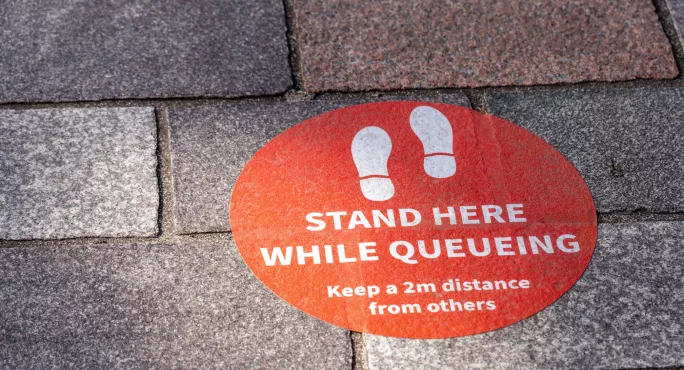6 ways to enforce social distancing in schools fairly

Our key stage 3 pupils arrived back in school last week, after nearly a year away from each other.
It was not surprising that this return created both wonderful moments of interaction, happiness and friendship and moments of genuine panic on behalf of staff when students let their enthusiasm slip into breaches of our Covid-19 rules.
No doubt schools elsewhere - including in England this week - will see the same thing.
It’s not students’ fault. They don’t deliberately ignore social distancing rules - they just forget.
But, for the greater good, we must insist on maintaining social distancing.
It is important that we do this in a way that does not create an overly strict regime and add more strain to our already strained pupils. Here’s how we have done that:
Schools reopening: Tips for social distancing
1. Take a soft-touch approach
Shouting at children for not socially distancing is going to create a back-to-school vibe that benefits no one.
Just like any behaviour challenge, it’s important that we adopt a respectful and explanatory approach to social distancing.
They aren’t breaking the rules deliberately, most of the time. Take your time, be patient and explain things in a normal tone of voice. This is far better than shouting down a corridor or across the playground.
2. Reward, don’t punish
We have found it far more beneficial to praise those who follow the rules rather than chastise those who don’t.
All children want to be praised - even teenagers - so use that to your advantage. We reward students for remembering to social distance by giving them house points or praise in house time.
3. Discuss and explain
It’s a complicated, scary and ever-changing Covid-19 world out there.
Rules that get passed down from educational authority to school leadership to teaching staff may make complete sense to us, but to students, who only see a small proportion of the guidance, they can seem strange and confusing.
Take the time to discuss, reflect and reinforce with your students, especially when rules change.
A short period spent discussing the new rules and their purpose can save a lot of time having to enforce them on an unwilling audience.
4. Use visual signals
In my PE department, we have adopted a single hand gesture to signal that students are too close, which all teachers have adopted. Ours is two hands together and moving apart. It’s simple, clear and understandable.
After a period of introduction, the students now instantly recognise the signal and check where they are. It’s a quick and non-shouty way to stop a child in their tracks.
5. Simple, consistent messages
As with any rule or process in schools, simple, clear, precise and age-appropriate messaging is key.
Oversimplifying or overcomplicating the message can have a huge impact in its effectiveness.
Adopt a single short phrase that all teaching and support staff will use when asking students to check their distances. This means children get used to hearing that phrase from all teachers and they instantly know and understand.
Different teachers saying different things all the time is only going to lead to confusion.
6. Social distancing doesn’t mean social isolation
Most importantly, we must remember: they are children. They need connections and contact, they need support networks and social opportunities.
They will make mistakes and get too close to each other, but that is OK. It’s better than the months of virtual isolation they have endured.
Allow them to talk, laugh, run, play. We will control them as much as possible, but social distancing could be a part of their future for a while to come and we need to learn to live with it, deal with it and make it work for our students.
Philip Mathe is director of sport at Brighton College Al Ain in the UAE
You need a Tes subscription to read this article
Subscribe now to read this article and get other subscriber-only content:
- Unlimited access to all Tes magazine content
- Exclusive subscriber-only stories
- Award-winning email newsletters
Already a subscriber? Log in
You need a subscription to read this article
Subscribe now to read this article and get other subscriber-only content, including:
- Unlimited access to all Tes magazine content
- Exclusive subscriber-only stories
- Award-winning email newsletters
